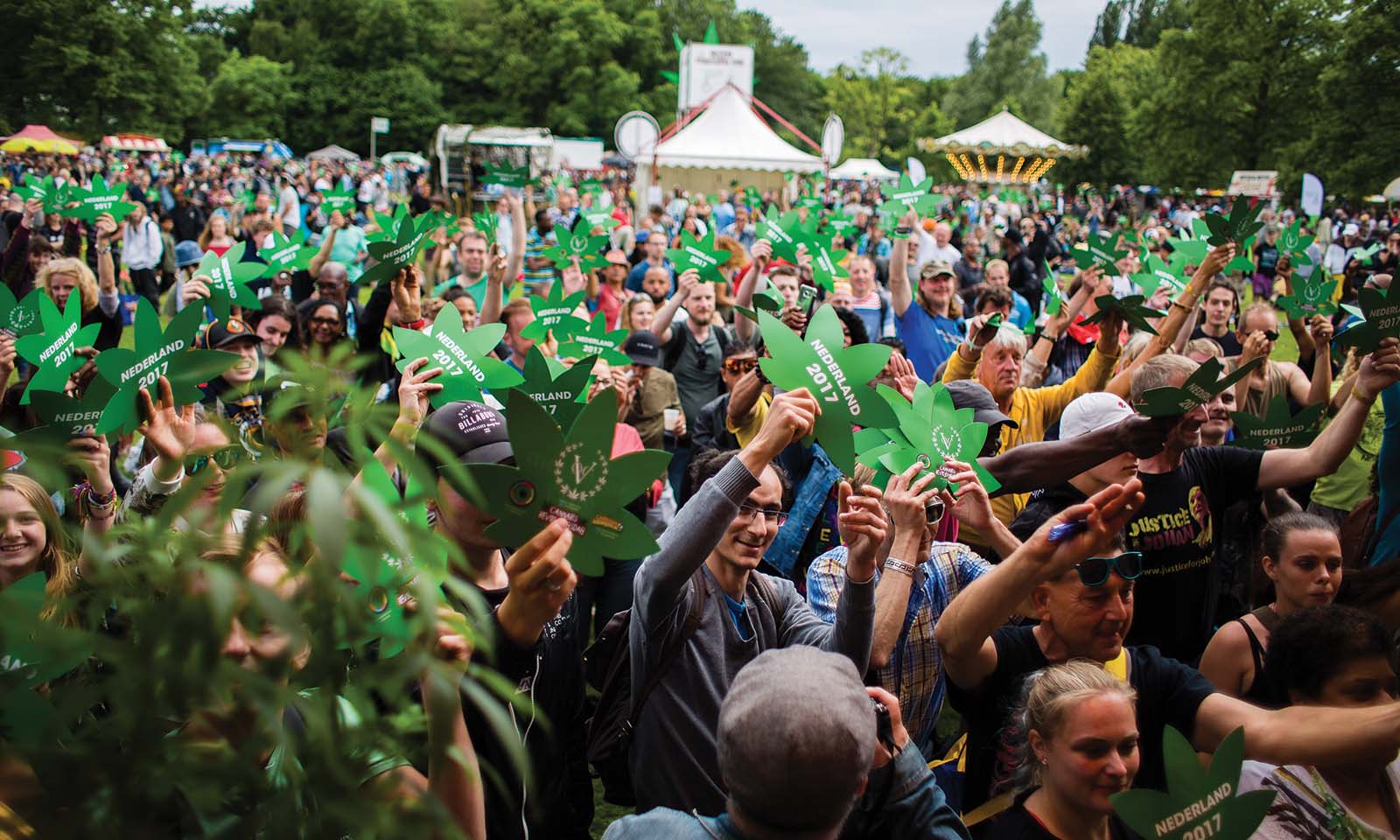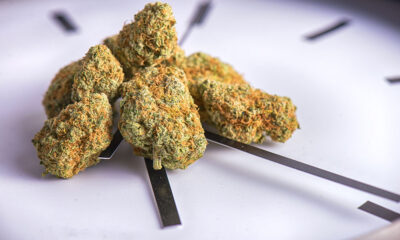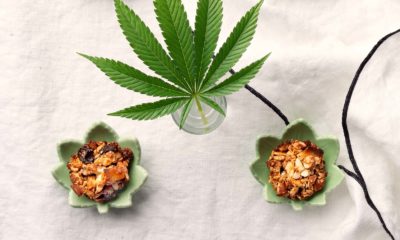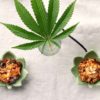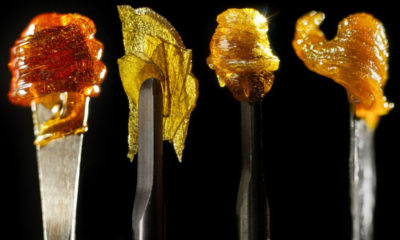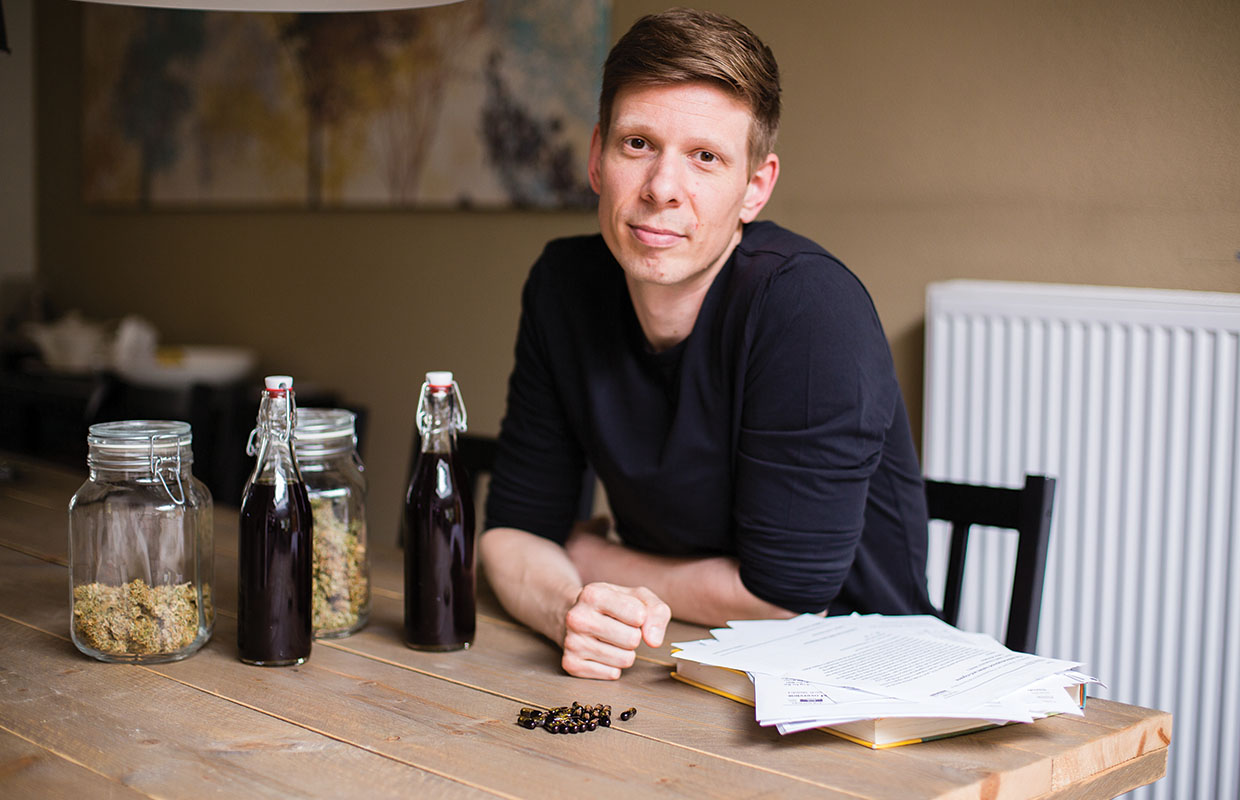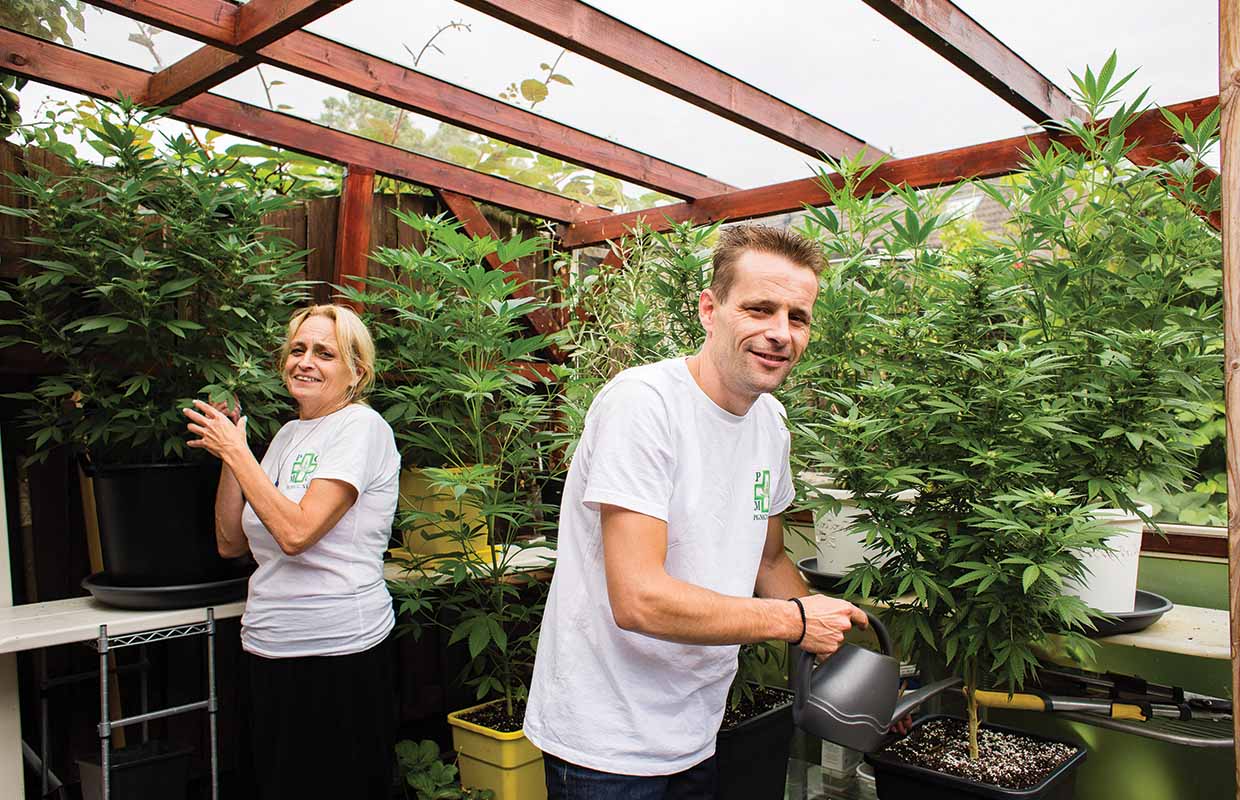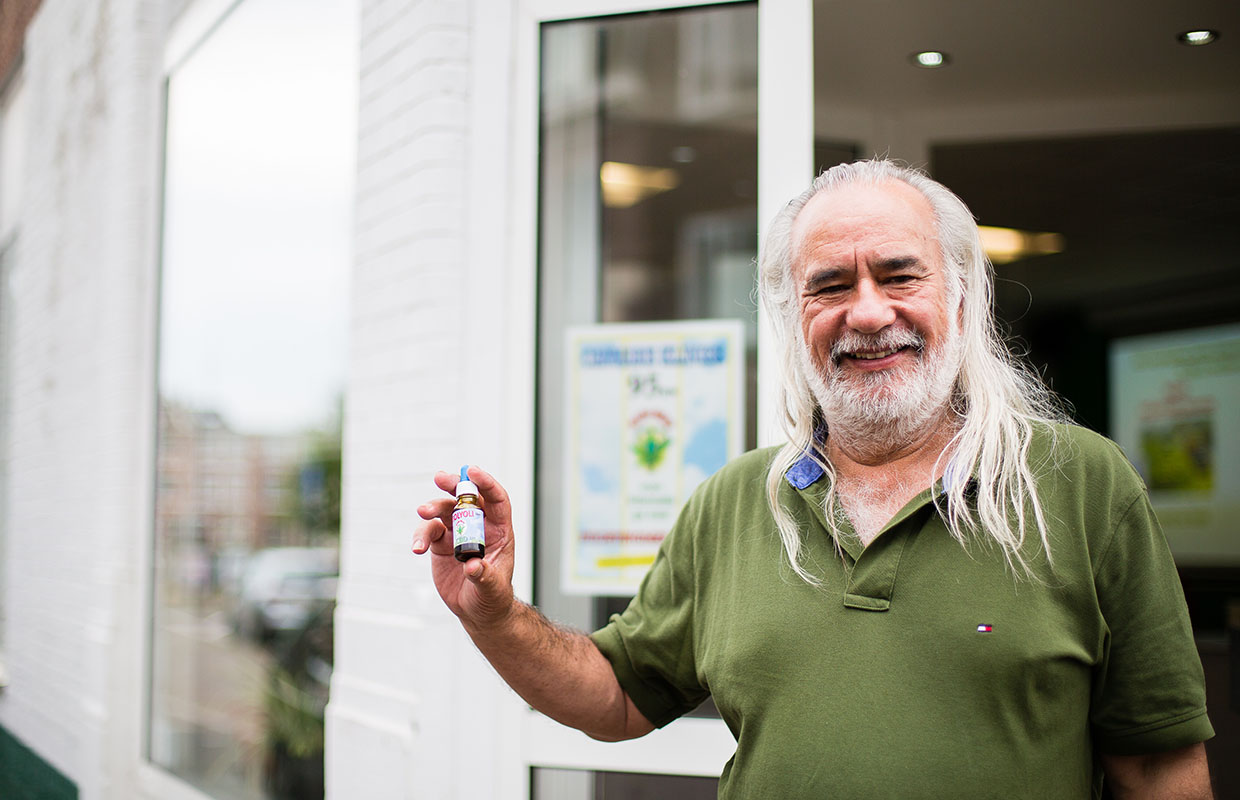Liberating Medical Cannabis in the Netherlands
The Netherlands is generally perceived as a mecca for cannabis, but the reality is far more complicated. At the ninth annual Cannabis Liberation Day it became clear that the Dutch have lost their forerunner’s position and are actually lagging behind, especially when it comes to medicinal cannabis.
It’s a warm sunny Sunday at the Flevopark in Amsterdam, where people have gathered for the ninth annual Cannabis Liberation Day. The event has drawn a multicultural crowd that harmoniously sits smoking and eating on the grass, browsing the hemp market or attending cannabis master classes. It’s an image you would expect from a country such as the Netherlands, but underneath the surface, cannabis consumers are getting restless. Everybody is here for the same purpose: to celebrate cannabis, but also to take action for changing cannabis policy in the Netherlands, which speakers from seven different countries agree, is long since overdue.
The Illegal Backdoor
The Netherlands is perceived as one of the most liberal countries in the world, largely because of its policy of tolerance towards cannabis. The Dutch drug tolerance policy was established in the 1970s and was aimed at harm reduction, meaning the government didn’t act from a moral stance, but a pragmatic one; they accepted the fact that the use of drugs is inevitable in society and that it’s best to cope with its risks and hindrances as practically as possible.
Therefore, cannabis is labeled in the Opium Act as a “soft drug” and a distinction is made between possessing small quantities for personal use versus large quantities for sales and distribution. Even though personal use is (strictly speaking) illegal, it’s tolerated and not prosecuted. And while growing and selling cannabis is illegal, “coffeeshops” — Amsterdam’s famous tourism-magnet — are still permitted under strict conditions.
The system in the Netherlands sounds like a form of legalization, and for a long time, in a world of prohibition, it kind of was. In reality, this tolerance policy means that coffeeshops have no suppliers. In actual fact they do, of course, because where would the entire cannabis supply that thousands of tourists are flying in for be coming from otherwise?
Coffeeshops are supplied through what the Dutch call “the illegal backdoor.” In the eyes of the law the cannabis is supplied by criminals. This has created a lopsided situation where growers operate in complete illegality with the risk of being arrested, prosecuted and having their crops confiscated for supplying “legal” coffeeshops — the operators of which do not work under the same risks.
Citizens are “allowed” to grow five plants or less and won’t be prosecuted for these five plants, but they will be confiscated if residents get caught growing them. And if you’re renting, you take the risk of being evicted from your home.
The Grey Area of Tolerance
Since cannabis is technically illegal but tolerated, nothing is certain when it comes to cannabis policy. Tolerance can always shift over time, which it has: Under pressure of international UN treaties that prohibit cannabis worldwide, the Netherlands has intensified enforcement efforts against cannabis cultivators over the last two decades. In contrast, the U.S., which initiated these international treaties, has started to decriminalize and legalize on a state level.
De Correspondent research journalist, Thijs Roes, reported that a police task force was established in 2008 to close down grows and labs in the Netherlands. Along with this came fines, house searches and prison time — all used to reduce the consumption and production of cannabis.
One plant in your backyard is enough to get you evicted, hundreds of shops have been closed down on account of opposing municipalities or their vicinity to schools and approximately 16 grows are shut down a day.
Often it’s the small-scale growers that are caught, like organic grower Doede de Jong, who has endured several police raids over the last 40 years and has witnessed the mentality shift first hand.
“I remember the days when the police would stop by on account of something non-related to cannabis, seeing my plants and just leaving them there because it wasn’t what they came for,” he said.
In the ’90s, when police did have an order to confiscate his plants, they waited long enough for de Jong to remove most the cannabis, and once they came, it was just two policemen, who had a cup of coffee before removing the little crop that de Jong left for them, not questioning that the stems that had been cut off.
This was far from reality a decade later.
“Around 2007, the government started a negative propaganda campaign,” de Jong said. “The next time they came for me, they came with a full on police corps and dogs. They handcuffed me and threw me in the back of a police van.”
De Jong has been charged with a fine for almost €300,000 (about $35,3265 in U.S. dollars) and might be losing his home of 47 years. The coffeeshop owner he delivered organic cannabis to? Now they have to buy most of their inventory from the only growers that manage to stay afloat in these harsh times; those who grow big, fast and use all sorts of pesticides to make as much money as they can off their crops.
The coffeeshop owner just bought a new car — while de Jong has a huge debt above his head and is still waiting to hear from the judge on his case.
The Growth of Medicinal Cannabis
The current cannabis policy also has its effect on the state of medicinal cannabis in the Netherlands. SFK, an organization analyzing the use of medicines in the Netherlands, said the amount of medicinal cannabis that was prescribed doubled last year and now the country lists 50,000 patients. That’s only patients that use prescribed medicinal cannabis — there are certainly many more, as it continues to be challenging to access medicine.
Coen Oudenhove, who suffers from cluster headaches, migraines and Crohn’s disease, was on eight different kinds of medications (with all sorts of side effects) before he started using medicinal cannabis.
“It took me 20 years to get medicinal cannabis to be prescribed to me and it was all on my own initiative,” he said. “When I read about medicinal cannabis, I studied everything I could find on the topic for six months. I had to give my specialist the information I found to get it prescribed. After having seen my recovery, he is asking me for advice.”
After only a couple of months of treatment with medical cannabis, Oudenhove was capable of applying for jobs again. He has been working full time ever since and was able to rekindle his social life.
Clean Medicine
Of course cannabis can be bought at any coffeeshop, but since it’s officially illegal and enters the shops through the illegal backdoor, it’s not tested for chemicals. As a patient, clean, organic cannabis is essential. There is the possibility of going to your doctor to get a referral for medicinal cannabis, but as Oudenhove’s case illustrates, most doctors are unaware of its existence or unwilling to prescribe it because they only know it as a “party drug,” which is what it has become famous for in the Netherlands — the negative PR campaign against it over the last two decades has done little to enhance that image.
In the context of legalization in the Netherlands, cannabis has never been seen as something that is wholesome or to be used for medicinal purposes. In that sense, it’s the opposite situation to the U.S. where, in most states with a form of legalization, medicinal use was accepted before recreational use.
For those who manage to get a medical cannabis referral from a doctor in the Netherlands, there is a government program to provide the medicine: There is one legal state farm, called Bedrocan, which grows according to general medical standards and offers five kinds of medicinal cannabis, but it’s not covered by any health insurance agency.
“When I get the cannabis medicines I need from Bedrocan, it costs me almost €200 for two weeks,” Oudenhove said. “It would mean I would need to use my savings to pay for it. I happen to have savings, but I know for a fact that many patients don’t and they would need to get out a loan to pay for them. In a year it could cost me around €5,000 to get my medicines from the pharmacy, but if I grow it myself, it would cost me €500 tops. The eight kinds of medicines that were prescribed that didn’t help me but were covered by my health insurance, cost €40,000 of tax money. It just doesn’t make any sense.”
For most patients, the cost of cannabis only leaves the option of growing at home. But since this is illegal, they take the risk that the police might bust down their door at any moment to take away all their plants and medicine, or they might just be evicted by their landlord.
Fighting for Change
Luckily, there are people advocating for legalization and initiating all sorts of actions that offer hope for the future.
A new law initiated by Vera Bergkamp from the political party D66 has passed the Second Chamber. It proposes a new cannabis policy of tolerating cultivation and sales of cannabis. It also encompasses a motion to make medicinal cannabis more available to patients and to make a legal exemption from the prohibition on cultivation for patients who want to grow at home for medicinal purposes. Whether or not this law will pass the First Chamber, is still uncertain.
At the end of last year, Serge de Bruin and Marian Hutten, who founded PGMCG (a non-profit organization that supports and educates patients of medicinal cannabis) triumphed in the municipality of Tilburg. With the mayor’s approval, patients within and in the near vicinity of Tilburg are now allowed to grow for medicinal purposes.
Patients like Oudenhove, who lives in Tilburg, said this is a real victory.
“It should be possible for patients in all municipalities to grow their own cannabis,” Hutten said. “Since cannabis products on the market aren’t tested and labeled, a patient should be able to grow their own organically.”
And other small victories are visible in that area. After a yearlong battle, a judge has allowed HIV-positive patient Rudolf Hillebrand, who lives in Amsterdam and was supported in his battle by the mayor, to grow 17 cannabis plants at home, even though his landlord disagrees.
The same goes for Bart Hissink, a patient with brain damage who lobbied at the municipality of Hof van Twente until they supported him. The municipality is now helping him to form an agreement with his landlord.
“What societal use is it to take away a patients medicines?” Hutten said. “If I see police pull out a patients plants, it physically hurts me. How dare they? What if I would take away everything in their medicine cabinet?”
Gaining New Rights by Taking Risks
Wernard Bruining, a pioneering cannabis activist in the Netherlands who founded the first coffeeshop, Mellow Yellow, in Amsterdam, is now a forerunner when it comes to advocating medicinal cannabis in the Netherlands. He founded a company called Mediwiet that teaches people how to make their own THC tinctures. His YouTube videos have millions of views and are filled with positive reports of patients — he has over 30,000 in his database.
His strategy to break through prohibition in the Netherlands? Teaching everyone who wants to know how to make THC oils.
“People have never gained new rights by asking for them politely, but always by breaking the law first and getting permission to do so afterwards,” Bruining said, adding he doesn’t fear getting caught for his practices. “They can catch me, but if I share my knowledge with thousands of others it’s like a fire spreading — this movement can’t be stopped.”
Originally published in Issue 28 of Cannabis Now. LEARN MORE
TELL US, have you ever visited the Netherlands?



